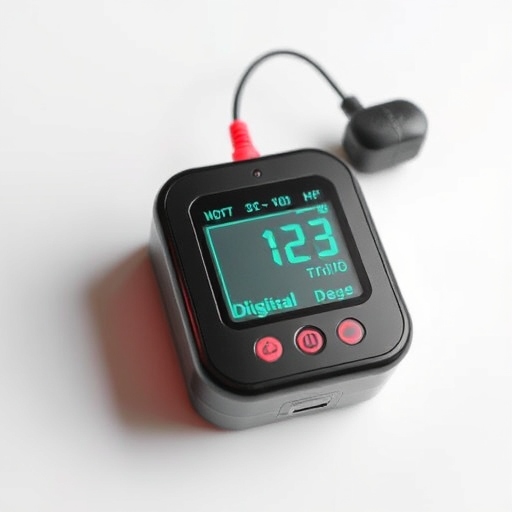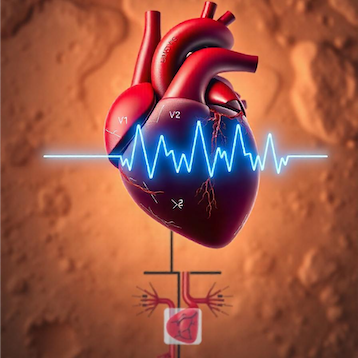Preliminary study on the immunohistochemical expression of galectin-3 in hypertrophic hearts

Published: June 28, 2024
Abstract Views: 1058
PDF: 276
HTML: 1
HTML: 1
Publisher's note
All claims expressed in this article are solely those of the authors and do not necessarily represent those of their affiliated organizations, or those of the publisher, the editors and the reviewers. Any product that may be evaluated in this article or claim that may be made by its manufacturer is not guaranteed or endorsed by the publisher.
All claims expressed in this article are solely those of the authors and do not necessarily represent those of their affiliated organizations, or those of the publisher, the editors and the reviewers. Any product that may be evaluated in this article or claim that may be made by its manufacturer is not guaranteed or endorsed by the publisher.
Similar Articles
- Rafael Vidal-Pérez, Ewa A. Jankowska, The scientific targets: the myocardium, the vasculature and the body’s response to heart failure , Global Cardiology: Vol. 2 No. 1 (2024)
- Maryanne Caruana, Miriam Gatt, Oscar Aquilina, Charles Savona Ventura, Victor Grech, Jane Somerville, The impact of maternal congenital heart disease on pregnancy outcomes in Malta: a retrospective study , Global Cardiology: Vol. 1 No. 1 (2023)
- Giuseppe M.C. Rosano, Andrew J.S. Coats, Modulation of cardiac metabolism in heart failure , Global Cardiology: Vol. 2 No. 3 (2024)
- Marwan M. Refaat, Nadim El Jamal, Hebah M. El-Rayess, Anthony Gebran, Amar M. Salam, The impact of diurnal fasting during Ramadan on patients with established cardiac disease: a systematic review , Global Cardiology: Vol. 2 No. 2 (2024)
- Eirini Flouda, Athena Stefanatou, Tinia Apergi, Intervention options: depression and cardiovascular disease during COVID-19 , Global Cardiology: Vol. 1 No. 1 (2023)
- Jelena Čelutkienė, Agnė Monika Jakštaitė, Jolita Badarienė, Svetlana Solovjova, Ieva Slivovskaja, Rokas Navickas, Edita Kazėnaitė, Egidija Rinkūnienė, Alma Čypienė, Jonas Misiūra, Ligita Ryliškytė, Aleksandras Laucevičius, Andrew J.S. Coats, Detection of early heart failure with preserved ejection fraction in metabolic syndrome patients detected as part of a national screening program in middle aged subjects , Global Cardiology: Vol. 1 No. 1 (2023)
- Muhammad Shahzeb Khan, Javed Butler, Laibah Arshad Khan, Markus S. Anker, Advanced cancer as a heart failure like syndrome due to cardiac wasting cardiomyopathy: facts and numbers , Global Cardiology: Vol. 2 No. 4 (2024)
- Ralph Stephan von Bardeleben, Muhammad Shahzeb Khan, Martin Geyer, Tim Friede, Javed Butler, Monika Diek, Jutta Heinrich, Marius Placzek, Roberto Ferrari, William T. Abraham, Ottavio Alfieri, Angelo Auricchio, Antoni Bayes-Genis, John G.F. Cleland, Gerasimos Filippatos, Finn Gustafsson, Wilhelm Haverkamp, Malte Kelm, Karl-Heinz Kuck, Ulf Landmesser, Aldo P. Maggioni, Marco Metra, Vlasis Ninios, Mark C. Petrie, Tienush Rassaf, Frank Ruschitzka, Ulrich Schäfer, P. Christian Schulze, Konstantinos Spargias, Alec Vahanian, Jose Luis Zamorano, Andreas Zeiher, Mahir Karakas, Friedrich Koehler, Mitja Lainscak, Alper Öner, Nikolaos Mezilis, Efstratios K. Theofilogiannakos, Ilias Ninios, Michael Chrissoheris, Panagiota Kourkoveli, Konstantinos Papadopoulos, Grzegorz Smolka, Wojciech Wojakowski, Krzysztof Reczuch, Fausto J. Pinto, Łukasz Wiewiórka, Zbigniew Kalarus, Marianna Adamo, Evelyn Santiago-Vacas, Tobias Friedrich Ruf, Michael Gross, Joern Tongers, Gerd Hasenfuß, Wolfgang Schillinger, Piotr Ponikowski, Stefan D. Anker, Baseline echocardiographic characteristics of patients enrolled in the randomized investigation of MitraClip device in heart failure (RESHAPE HF-2) trial: comparison with COAPT and Mitra-FR , Global Cardiology: Vol. 2 No. 2 (2024)
- Giuseppe M.C. Rosano, Jerneja Farkas, Evolving targets for heart failure: the journey so far , Global Cardiology: Vol. 1 No. 1 (2023)
- Elias Tassoulas, Dimitrios Tasoulas, Christos Papaconstantinou, Ioannis Chlorogiannis, Prognostic factors and outcome in patients submitted into coronary artery bypass surgery with total arterial myocardial revascularization , Global Cardiology: Vol. 2 No. 4 (2024)
You may also start an advanced similarity search for this article.

 https://doi.org/10.4081/cardio.2024.37
https://doi.org/10.4081/cardio.2024.37

















